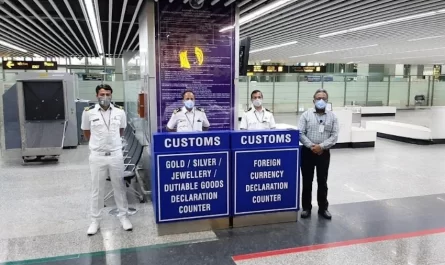Navigating Airports: A Guide for Wheelchair Users
Contents
Traveling by air can be a daunting experience for many, but for wheelchair users, it comes with a unique set of challenges and considerations. However, with proper planning and knowledge, navigating airports and flying can be a smooth and enjoyable process.
Checking your wheelchair or mobility device is free, and this service is offered in addition to your standard baggage allowance. This policy covers a wide range of mobility aids, including manual and electric wheelchairs, scooters, walkers, canes, and crutches, irrespective of whether they are folding, non-folding, or collapsible.
This guide aims to assist wheelchair users in making their air travel experience as seamless as possible.
Reserving Wheelchair Assistance
If you require a wheelchair, it’s crucial to reserve one at the time of your flight reservation, during ticketing, or when reconfirming your booking. Airlines request travelers to pre-book wheelchair assistance to ensure availability and to avoid any last-minute delays. This proactive step is essential for a stress-free travel experience, allowing airlines to accommodate your needs effectively from the moment you arrive at the airport.
How do I tell my airline I need a wheelchair?
To inform your airline that you need a wheelchair, contact them directly as soon as possible, ideally when booking your ticket or at least 48 hours before your flight. This can be done through the airline’s reservation system online, by phone, or via a travel agent. Provide detailed information about your mobility needs and the type of wheelchair you use. Airlines may also offer the option to request wheelchair assistance through their website during the booking process.
Is There an Extra Charge for Wheelchair Assistance?
How much does it cost to fly with a wheelchair?
The good news for travelers is that wheelchair assistance is provided at no additional charge. Airlines are committed to making travel accessible to all passengers, ensuring that those in need of wheelchair assistance can receive it without worrying about extra costs. This policy is a part of airlines’ broader efforts to comply with accessibility regulations and to promote an inclusive travel environment.
Requesting Wheelchair Assistance
To request wheelchair assistance, it’s advisable to contact your airline in advance. Most airlines allow you to request this service online when you book your ticket or by calling their customer service. Alternatively, you can also request assistance at the airline’s ticket counter on your day of travel. However, arranging this service in advance is recommended to guarantee that help is ready and waiting for you upon your arrival at the airport.
How do wheelchair users get on a plane?
Wheelchair users get on a plane through a series of coordinated assistance and specialized equipment provided by the airline and airport staff to ensure a smooth and dignified boarding process. Here’s how the process typically works:
- Early Communication and Check-In: Wheelchair users often inform the airline of their needs at the time of booking or check-in, allowing the airline to prepare the necessary assistance.
- Assistance to the Gate: Airports provide assistance to help wheelchair users get from the check-in area to the gate. This may involve the use of the passenger’s own wheelchair, an airport-provided wheelchair, or a motorized cart.
- Priority Boarding: Most airlines offer priority boarding to passengers with disabilities, allowing them to board before other passengers. This gives them more time to board and get settled.
- Aisle Wheelchairs: Due to the narrow airplane aisles, a standard wheelchair cannot fit through them. Airlines provide a special narrow wheelchair, known as an aisle wheelchair, to transport passengers from the aircraft door to their seat. Airline personnel are trained to assist in transferring the passenger from their personal wheelchair to the aisle wheelchair and then to their seat.
- Stowing the Wheelchair: The passenger’s personal wheelchair is typically tagged and stowed in the cargo hold of the plane. Some aircraft also have designated spaces in the cabin for collapsible wheelchairs.
- Assistance upon Arrival: Upon arrival, the process is reversed. The passenger is assisted back into an aisle wheelchair (if necessary) and then transferred to their personal wheelchair or an airport wheelchair once it is retrieved from the cargo hold or designated storage.
- On-Board Wheelchairs: For longer flights, especially those with accessible lavatories, an on-board wheelchair may be available to assist wheelchair users in moving around the cabin.
Airlines and airports are required to comply with regulations designed to ensure accessibility and non-discrimination for passengers with disabilities, including wheelchair users. It’s always recommended that passengers communicate their needs clearly and in advance with the airline to ensure the best possible assistance.
Can I bring my wheelchair on an airplane?
Yes, you can bring your wheelchair on an airplane. Airlines accommodate passengers with disabilities and are equipped to transport both manual and powered wheelchairs. It’s recommended to inform the airline about your wheelchair when booking your ticket, providing details such as the type of wheelchair, dimensions, and, if applicable, battery specifications. While manual wheelchairs may sometimes be stowed in the cabin, powered ones are usually transported in the cargo hold. Airlines do not charge extra for transporting wheelchairs. To ensure the best care and handling, clearly communicate your needs and any specific instructions regarding your wheelchair in advance.
Tipping Wheelchair Assistants
While wheelchair assistance is provided free of charge, many travelers wonder about the etiquette of tipping the airport staff who assist them. Tipping is not required, but it is appreciated as a gesture of gratitude for good service. The amount is at the traveler’s discretion, but a typical tip might range from $5 to $20, depending on the level of assistance provided and the traveler’s personal preference.
Travel Tips for Wheelchair Users
- Check Your Wheelchair: Before traveling, ensure your wheelchair is in good condition and consider marking it with identification tags.
- Early Arrival: Arrive at the airport early to allow extra time for check-in, security clearance, and boarding.
- Communicate Your Needs: Clearly communicate your needs and any concerns with airline and airport staff to ensure a smooth experience.
- Know Your Rights: Familiarize yourself with your rights as a disabled traveler. Regulations like the Air Carrier Access Act (ACAA) in the United States protect travelers with disabilities.
Air Carrier Access Act
Airlines are committed to ensuring equal access and non-discriminatory treatment for all passengers, including those with disabilities, adhering to specific guidelines designed to protect the rights of travelers. Passengers with disabilities cannot be denied transportation based on their disability, although safety considerations can lead to exceptions if the individual’s presence poses a direct threat to the safety of the flight. In such cases, airlines are required to provide a detailed written explanation.
While airlines do not generally demand advance notice for passengers with disabilities, they may request up to 48 hours’ notice for accommodations that need preparation, such as respirator hook-ups or the transport of electric wheelchairs on smaller aircraft. There are no restrictions on the number of passengers with disabilities allowed on a flight, and airlines cannot mandate that these passengers travel with a companion, except under specific safety-related circumstances. Seating cannot be refused or mandated based on disability, except to meet FAA or international safety regulations, including those regarding exit row seating.
Modern aircraft designs reflect these inclusive practices, with new planes featuring movable aisle armrests, accessible lavatories, and storage for folding wheelchairs in the cabin. Additionally, larger aircraft are equipped with on-board wheelchairs, enhancing accessibility. Airlines are also responsible for ensuring accessible airport facilities and services under their control.
Beyond physical accommodations, airlines offer assistance with boarding, deplaning, and making connections. This assistance extends within the cabin but does not include extensive personal services. Mechanisms like ramps or mechanical lifts are mandated at U.S. airports for aircraft with 19 or more seats. Assistive devices are prioritized for in-cabin storage and do not count towards carry-on baggage limits. Battery-powered wheelchairs and portable oxygen concentrators labeled as FAA-approved are permitted on flights, with airlines providing necessary packaging for batteries without additional charges. These regulations underscore the commitment to accessibility, ensuring a dignified and comfortable travel experience for passengers with disabilities.
Navigating airports as a wheelchair user requires extra planning, but it shouldn’t deter you from exploring the world. Airlines and airport staff are there to support you, ensuring that your journey is as comfortable and hassle-free as possible. By reserving wheelchair assistance in advance, knowing your rights, and communicating your needs, you can embark on your air travel adventures with confidence.
Travel Tips to Help Seniors through TSAFlying with Your Service Animal
Essential Tips for Travelers in Wheelchair
Can I Bring My Own Wheelchair Through TSA?
All about Carry-On Luggage and Travel
Checked Bag: Costs, Tips, and Tricks
Airlines with free baggage
Flying with Oversize and Overweight Bags
Checked Luggage Restrictions
Going through airport security with food
Hard or Soft Luggage?
Hacks To Beat Baggage Fees



